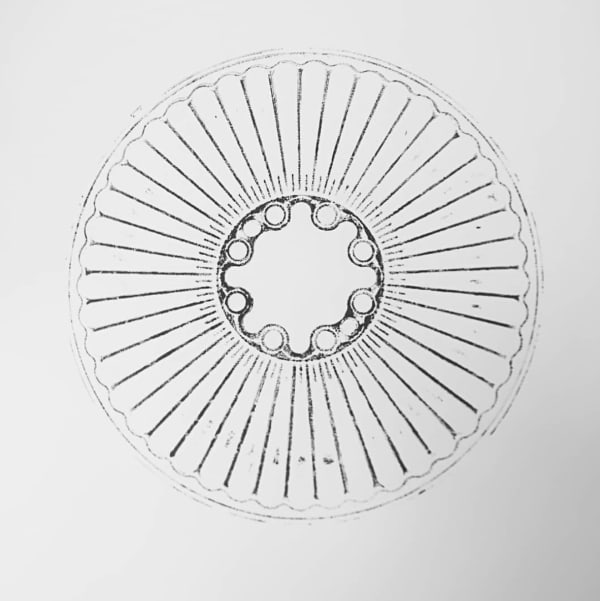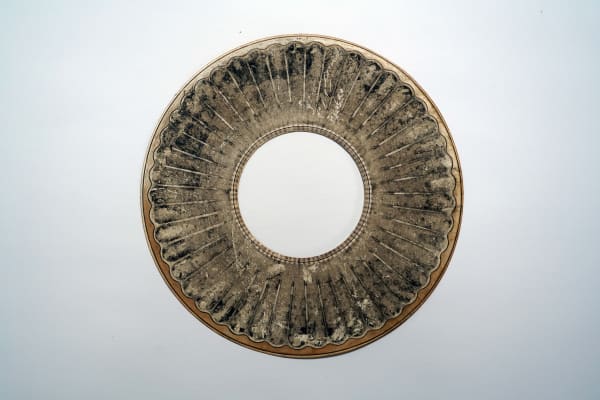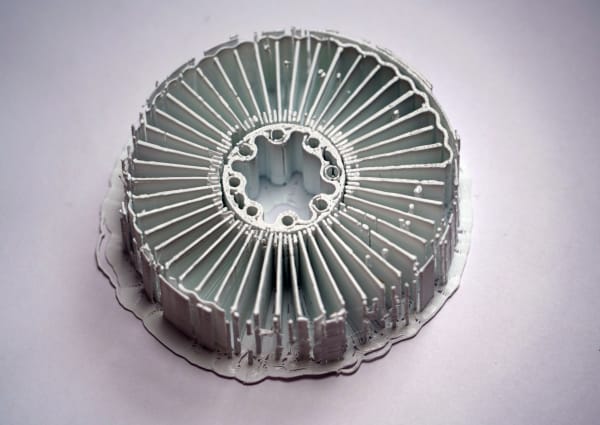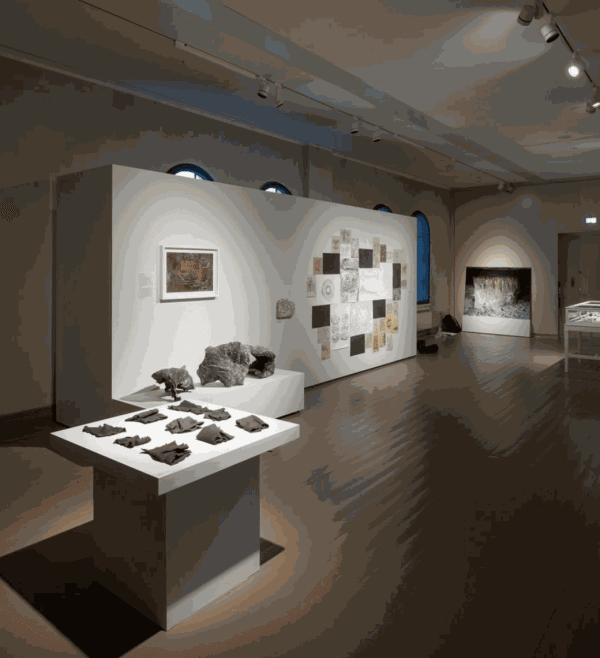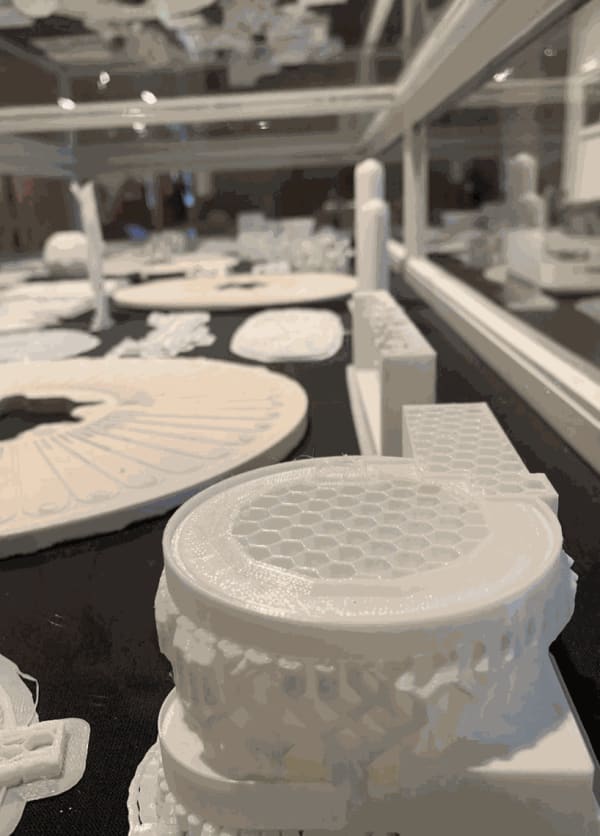Dig it up and put it in a bag: University Museum, Bergen, NorwayUniversity Museum, Bergen, Norway
A cross disciplinary exhibition, that departs from, and investigates several encounters and alignments between Contemporary Art and Archaeology. The goal is to create autonomous and collaborative artistic, poetic and scientific expressions and responses to prehistoric Art and its contemporary images.
A cross disciplinary exhibition, that departs from, and investigates several encounters and alignments between Contemporary Art and Archaeology. The goal is to create autonomous and collaborative artistic, poetic and scientific expressions and responses to prehistoric Art and its contemporary images.
The Irish visual artist Professor Eamon O'Kane is investigating the recent past through a ten-year project at a site in Denmark and is using the archive accumulated from this research as a comparative to the distant past of a Neolithic site, Newgrange in Ireland. O´Kane uses an observation made by Buckminster Fuller where he relates Einstein´s theory of relativity to a deeper understanding of the universe, explaining that when one looks at the night sky one is looking into a type of time machine where it is possible to see stars that have died many thousands of years ago simultaneously with stars which are being born more recently. O´Kane is developing artworks which examine the history of humankind’s relationship to mapping the night sky and the cosmos through mark making and symbols. He compares different approaches throughout the centuries including the stone carvings on passage tombs at Newgrange which date from 3200 BC right up to images of space produced by NASA.
The title Dark Matter refers to the invisible form of matter thought to account for approximately 85% of the matter in the universe and about a quarter of its total mass–energy density or about 2.241×10−27 kg/m3. Inspired by Robert McFarlane's Underland where he explores Neolithic burial chambers in the Mendip Hills of Somerset, and North Yorkshire’s Boulby Underground Laboratory, where physicists such as Christopher Toth investigate dark matter a kilometre below the surface. O'Kane makes connections between early indgenious belief systems and their understanding of the unknown and more contemporary thoughts about the origins of the universe.
DIG IT UP AND PUT IT IN A BAG
Matter, Gesture and Soul is a cross-disciplinary research project investigating the extent to which contemporary art can cultivate points of contact with archeology. The project has established a collaborative environment in which artistic, poetic and scholarly work, in dialogue with prehistoric ‘art’, explores ways in which we respond to the traces of human activity from the Neolithic and Mesolithic eras.
Nature has been humanity’s companion throughout our existence on earth. Abalone shell, ochre residue, the geometric markings on the rocky formations at Fontainebleau, cave drawings in South Africa, the passage tomb at Newgrange, and spoors of our more immediate past all testify to the myriad ways human beings have interacted with each other and their physical surroundings over the course of our existence.
If we are to change the way we impact the earth’s ecosystems, it is imperative that we find a new mindset. We are digging up the past in search of a new future, we dig to learn how to transform perception into new understanding. All research disrupts thought; that is the point. But we also know that when ideas find a voice and step out into the world as knowledge, it is frequently the result of collective effort that spanned a gamut of disciplines.
Art is a discipline that collects and presents without the strict premises, methods or requirements of scientific inquiry. It can perhaps be compared with a string bag, tote or carry-all in which all our findings and processing can be gathered and carried further. We dig, we reap, we put stuff in our bags and move onward. Now and then we feel the need to stop for a moment, empty our bags of their contents and share them with others as we discuss the days to come.
Marit Paasche, PhD in Art History, curator, writer and independent scholar.
Participants: Geir Harald Samuelsen / Eamon O’Kane / Elin Tanding Sørensen / Maarten Vanden Eynde / Åsil Bøthun / Petro Cecilia Keene / Dragoş Gheorghiu
University Museum, Bergen, Norway. Aug. 27 - Nov. 7 2021
The Irish visual artist Professor Eamon O'Kane is investigating the recent past through a ten-year project at a site in Denmark and is using the archive accumulated from this research as a comparative to the distant past of a Neolithic site, Newgrange in Ireland. O´Kane uses an observation made by Buckminster Fuller where he relates Einstein´s theory of relativity to a deeper understanding of the universe, explaining that when one looks at the night sky one is looking into a type of time machine where it is possible to see stars that have died many thousands of years ago simultaneously with stars which are being born more recently. O´Kane is developing artworks which examine the history of humankind’s relationship to mapping the night sky and the cosmos through mark making and symbols. He compares different approaches throughout the centuries including the stone carvings on passage tombs at Newgrange which date from 3200 BC right up to images of space produced by NASA.
The title Dark Matter refers to the invisible form of matter thought to account for approximately 85% of the matter in the universe and about a quarter of its total mass–energy density or about 2.241×10−27 kg/m3. Inspired by Robert McFarlane's Underland where he explores Neolithic burial chambers in the Mendip Hills of Somerset, and North Yorkshire’s Boulby Underground Laboratory, where physicists such as Christopher Toth investigate dark matter a kilometre below the surface. O'Kane makes connections between early indgenious belief systems and their understanding of the unknown and more contemporary thoughts about the origins of the universe.
DIG IT UP AND PUT IT IN A BAG
Matter, Gesture and Soul is a cross-disciplinary research project investigating the extent to which contemporary art can cultivate points of contact with archeology. The project has established a collaborative environment in which artistic, poetic and scholarly work, in dialogue with prehistoric ‘art’, explores ways in which we respond to the traces of human activity from the Neolithic and Mesolithic eras.
Nature has been humanity’s companion throughout our existence on earth. Abalone shell, ochre residue, the geometric markings on the rocky formations at Fontainebleau, cave drawings in South Africa, the passage tomb at Newgrange, and spoors of our more immediate past all testify to the myriad ways human beings have interacted with each other and their physical surroundings over the course of our existence.
If we are to change the way we impact the earth’s ecosystems, it is imperative that we find a new mindset. We are digging up the past in search of a new future, we dig to learn how to transform perception into new understanding. All research disrupts thought; that is the point. But we also know that when ideas find a voice and step out into the world as knowledge, it is frequently the result of collective effort that spanned a gamut of disciplines.
Art is a discipline that collects and presents without the strict premises, methods or requirements of scientific inquiry. It can perhaps be compared with a string bag, tote or carry-all in which all our findings and processing can be gathered and carried further. We dig, we reap, we put stuff in our bags and move onward. Now and then we feel the need to stop for a moment, empty our bags of their contents and share them with others as we discuss the days to come.
Marit Paasche, PhD in Art History, curator, writer and independent scholar.
Participants: Geir Harald Samuelsen / Eamon O’Kane / Elin Tanding Sørensen / Maarten Vanden Eynde / Åsil Bøthun / Petro Cecilia Keene / Dragoş Gheorghiu
University Museum, Bergen, Norway. Aug. 27 - Nov. 7 2021



